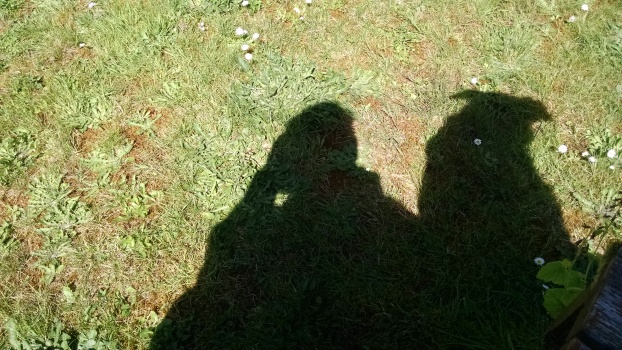![IMG_20160822_095957009[1]](https://unleashedinoregon.files.wordpress.com/2016/08/img_20160822_0959570091.jpg?w=376&h=668) Tidy up your house and you tidy up your life. That’s the thesis of the book I’m reading now, The Life Changing Magic of Tidying Up by Marie Kondo. At a writing workshop recently, the teacher made fun of the book, but I felt it calling to me at the bookstore, so I bought it.
Tidy up your house and you tidy up your life. That’s the thesis of the book I’m reading now, The Life Changing Magic of Tidying Up by Marie Kondo. At a writing workshop recently, the teacher made fun of the book, but I felt it calling to me at the bookstore, so I bought it.
Kondo is Japanese and young. The book has been translated into English. There are cultural differences and concepts I just cannot buy. I don’t think she understands how big a modern American house can be and how much stuff is in it. And how rarely Americans use the word “tidy.” But never mind. I like the idea of simplifying my space by keeping only what “sparks joy” and storing it so I’m not looking at my junk everywhere I turn.
She talks to her things, thanking them for their service, urging them to rest when she puts them in the drawer. She asks her house where things should go. My house doesn’t seem to have an opinion.
Kondo’s way of tidying up is radical. It amounts to discarding at least half of your possessions. You must do it all at once, not a little at a time, or you will never get done. (I’ve noticed). You must pull everything out, handle each item, and ask if it sparks joy. If it does not, get rid of it. Not just if it’s useful or still good, but do you love it?
Only when you have discarded everything you don’t need should you think about how to store what’s left. Kondo says, “Putting things away creates the illusion that the clutter problem has been solved.” Oh, how I know that. I have moved many times. As soon I pull everything out, I begin to realize just how much I have. Oh for the days when I could fit everything in a pickup truck.
Reading this book, I couldn’t wait to start tidying up. I began with my socks, a big mismatched mess. I threw away socks without partners, socks in bad shape, socks that I just hated and never wore. On Kondo’s direction, I rolled the rest like sushi rolls and set them in my drawer. I love it. Now I can find my blue socks, brown socks, and black socks easily. There are no loser socks anymore.
Moving on, I sorted and rolled up my underwear and my stockings, making a satisfying display. It got harder with nightgowns. If you never wear them, Kondo says they have to go. But wait, that one’s so pretty; if I ever have a gentleman companion again, I’d want to wear it. And that one’s so cute. . . .
If Kondo were here in my house, we’d end up screaming at each other. I was raised to use things up, to keep them if they were good, even if I didn’t love them. Never to waste anything. So now to say if it doesn’t spark joy, I need to throw it away? It cost money. It’s still good. I might use it.
It gets worse. Kondo prescribes getting rid of all paper. I repeat: ALL paper. Credit card statements, owners’ manuals, books you’ve already read—out with all of them. You don’t need them. But . . . .
Keepsakes? Keep the memories, get rid of the mug, the tote bag, the photograph, the ash tray your child made in first grade. Greeting cards? Out. It’s the only way you can process your past, she says. Hold on, Marie Kondo.
I like a tidy, uncluttered space. I have been trying to winnow down my possessions, knowing that someday I will probably move to a smaller home and will have to “downsize.” I know that after I die, somebody will get stuck with my stuff. But right now, I like my stuff. It’s easy to get rid of loser socks, but the last Christmas card with my mother’s signature? My wedding gown? Fred’s aquarium jacket with all his badges still attached? My financial records and notes for my books? Not yet.
It’s crazy that we’ve reached a point where we have acquired so much stuff we need a best-selling book to tell us how to sort it out so we can breathe in our own homes. And yet we keep buying more.
This book has more than 10,000 reviews, most of them five stars, on Amazon.com. On Goodreads, a site for booklovers, the reviews aren’t as good. As one writer says, “This book does not spark joy.” Okay, it’s goofy with its talking to things, and it assumes we can all afford to throw stuff away because we don’t love it, that we can always buy another one. But there’s a lot of wisdom in there, too.
My mother would agree with most of what Kondo says. She did not hold on to things. She was always after me to clean up my room, especially my closet. She threatened to throw it all out if I didn’t. But hey, I’m a grownup now, and this is my shit. Hands off. Don’t mess with my joy.
How about you? Are you ready to purge? Where do you get stuck?
